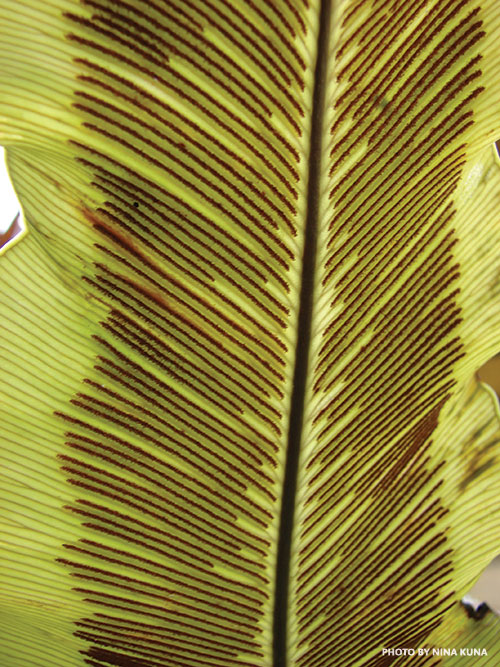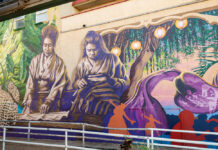
Early Hawaiian healers often turned to ferns for medicinal purposes. They mashed hāpu‘u pith into remedies that relieved chest pains, revived appetites, and purified the blood. They combined ‘ēkaha ferns with other plants to treat sores, ‘ea (thrush), and pā‘ao‘ao (physical weakness). They used powdery moa spores as a purgative, and according to Kathy Valier, the author of Ferns of Hawaii, as talcum beneath loincloths.
Modern cultural practitioners continue to incorporate ferns in medicine, lei, dyes, and spiritual offerings. Hula dancers keep their eyes open for patches of lacy palapalai fern, a Hawaiian member of the genus Bracken. It’s considered a kino lau (physical manifestation) of Laka, the hula goddess. Before harvesting the filigreed fern, dancers ask permission and perform sacred protocols. They decorate altars to Laka with the emerald-green fronds and braid them into lei po‘o (crowns) and lei kūpe‘e (wristlets), which they wear while dancing.
Palapalai had another use, according to a 1922 publication by D. M. Ka‘aiakamanu and J. K. Akina. It was a cure for insanity. The authors did not relate any details regarding application or dosage—however, simply staring at this vibrant fern and inhaling its verdant perfume is bound to improve anyone’s mood.






so happy to see your article, mahalo